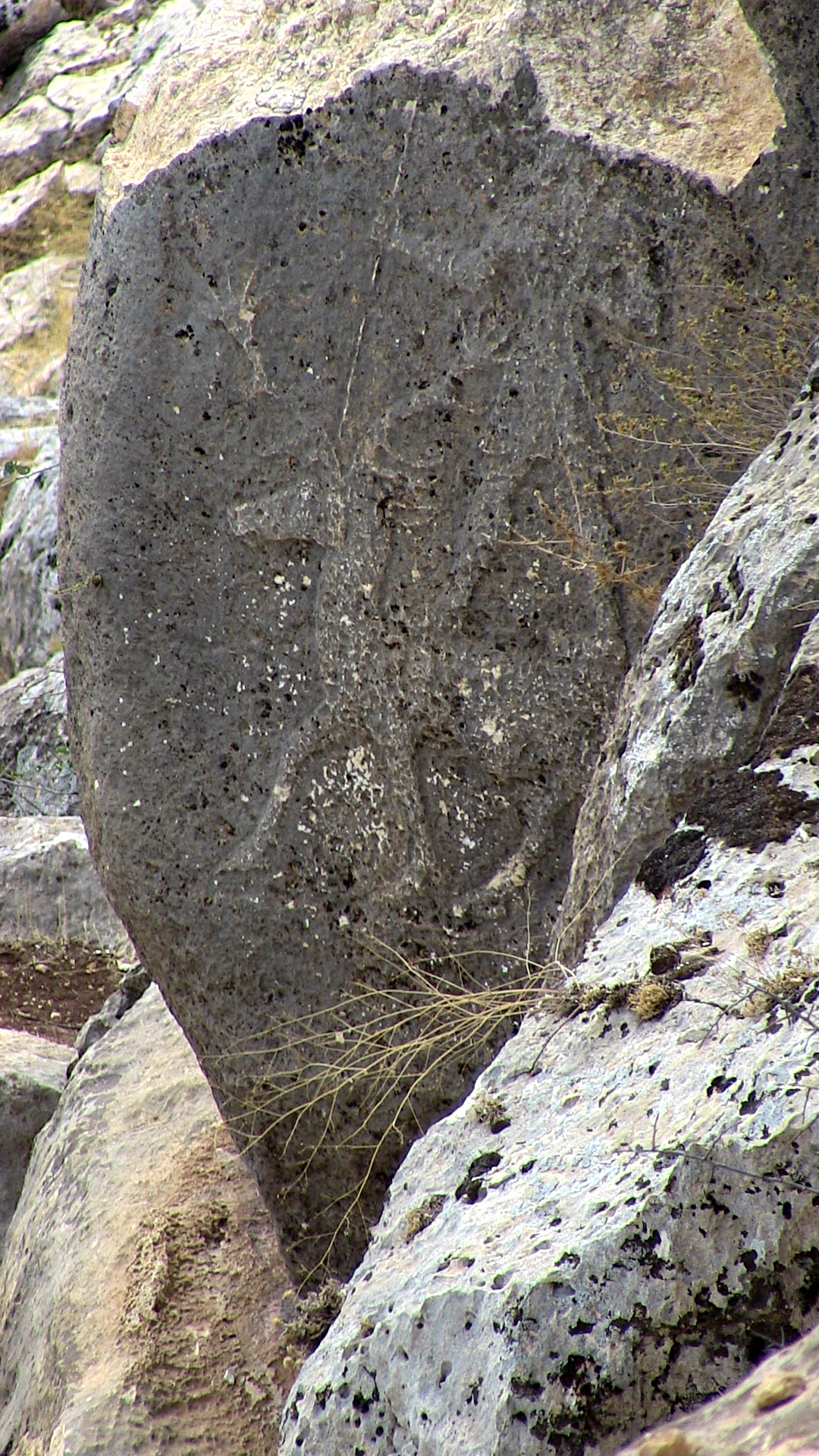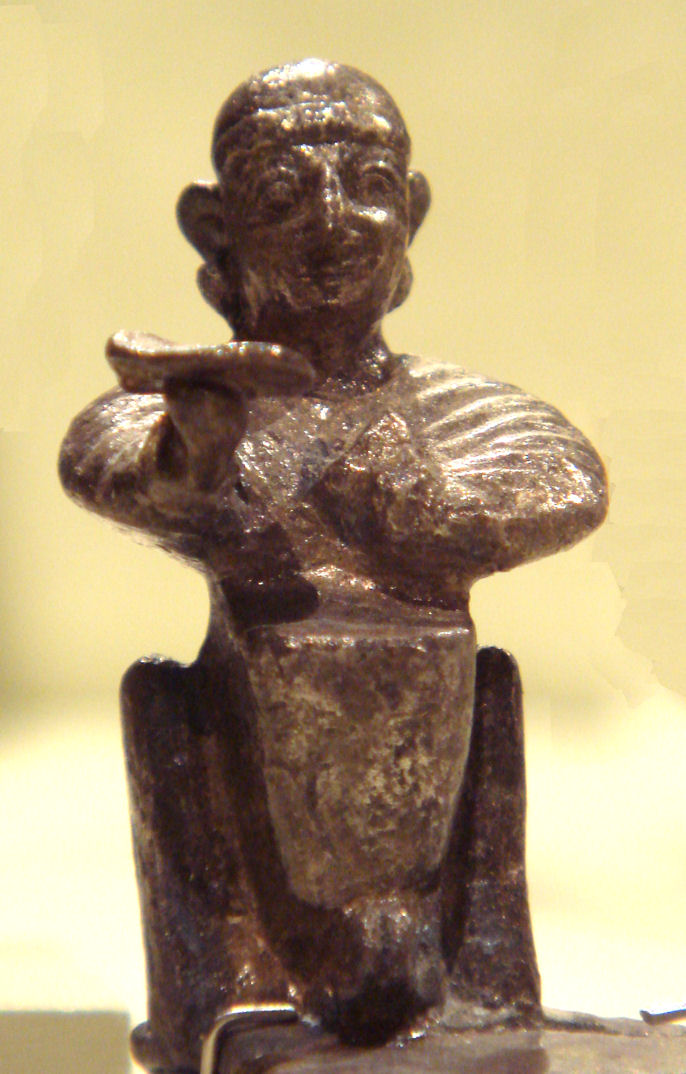|
Kurunta
Kurunta () or Kurunti(ya) is the Hittite mythology, Hittite stag god and a tutelary god of the countryside. Name The name of Kurunta is spelled as (DEUS)CERVUS in Hieroglyphic Luwian, or as dKAL in Hittite cuneiform. As dKAL has to be read as dLAMMA following Assyriological tradition, many times it is directly transliterated as dLAMMA instead. Kurunta was attested as Runti(ya) in the first millennium BC, although there is a possibility that the loss of the initial syllable may have occurred during the time of the Hittites, Hittite New Kingdom/Empire period. Character and iconography Kurunta is a tutelary deity, as seen from the usage of the sign dKAL which corresponds to dLAMMA. However, there are still differences between the Hittite dKAL deities and the Mesopotamian dLAMMA deities, such as that KAL and LAMMA have different meanings, and Archi adds that unlike the Mesopotamian dLAMMA the Hittite dKAL deities were always considered male. His sacred animal is the stag. A ... [...More Info...] [...Related Items...] OR: [Wikipedia] [Google] [Baidu] |
Karhuha
Karhuha (Karḫuḫa), also known as Karḫuḫi, was the tutelary god of the ancient city of Carchemish. It is possible that was associated with deer, and it is presumed his character was similar to that of Hittite Kurunta. He is first attested in texts from the second half of the second millennium BCE, and there is no agreement among researchers if he was a Hurrian god in origin or if similarly to closely associated goddess Kubaba he predated Hurrian control over the region. He appears in a variety of Hittite and Luwian texts, and continued to be worshiped in Carchemish at least up to the reign of Sargon II. Name Karhuha's name was written as '' dKar-ḫu-ḫa'' or ''dKar-ḫu-u-ḫi-iš'' in cuneiform, which reflects the forms Karḫuḫa and Karḫuḫi, respectively. The breves are often omitted in romanization, leading to the use of the spelling Karhuha in modern literature. The name could also be represented by the logogram d LAMMA and possibly analogously by CERVUS in L ... [...More Info...] [...Related Items...] OR: [Wikipedia] [Google] [Baidu] |
Carchemish
Carchemish ( or ), also spelled Karkemish (), was an important ancient capital in the northern part of the region of Syria. At times during its history the city was independent, but it was also part of the Mitanni, Hittite and Neo-Assyrian Empires. Today it is on the frontier between Turkey and Syria. It was the location of an important battle, about 605 BC, between the Babylonians and Egyptians, mentioned in the Bible (Jer. 46:2, 2 Chron. 35:20). Modern neighbouring cities are Karkamış in Turkey and Jarabulus in Syria (also Djerablus, Jerablus, Jarablos, Jarâblos). Geography of the site Carchemish is now an extensive set of ruins (90 hectares, of which 55 lie in Turkey and 35 in Syria), located on the West bank of Euphrates River, about southeast of Gaziantep, Turkey, and northeast of Aleppo, Syria. The site is crossed by the Baghdad Railway that now forms the Turco-Syrian border. The site includes an acropolis along the river, an Inner Town encircled by earthe ... [...More Info...] [...Related Items...] OR: [Wikipedia] [Google] [Baidu] |
Runtiya
Runtiya was the Luwian god of the hunt, who had a close connection with deer. He was among the most important gods of the Luwians. Name The name was written in the Luwian language#Cuneiform Luwian, Luwian cuneiform of the Bronze Age as , which can be read as *Runtiya or *Kruntiya. In Hieroglyphic Luwian of the Iron Age, he was named "Runtiya" and his name was generally written with the image of a deer or antlers, as (DEUS) CERVUS ("God deer"). The name is possibly derived from a word for "horn" or "antler", but all the etymologies which have been proposed to date are problematic. The relationship between Runtiya and the Kurunta (god), Kurunta is disputed. Some scholars argue that the two gods are identical and reconstruct an older Luwian form of the name, *''Krunti(ya)-''; others suggest that there was a pre-Indo-European Anatolian divinity which the Luwian Runtiya and the Hittite Kurunta had developed. Runtiya was often invoked in personal names: the oldest example derives t ... [...More Info...] [...Related Items...] OR: [Wikipedia] [Google] [Baidu] |
Hittite Deities
Hittite mythology and Hittite religion were the religious beliefs and practices of the Hittites, who created an empire centered in Anatolia from . Most of the narratives embodying Hittite mythology are lost, and the elements that would give a balanced view of Hittite religion are lacking among the tablets recovered at the Hittite capital Hattusa and other Hittite sites. Thus, "there are no canonical scriptures, no theological disquisitions or discourses, no aids to private devotion". Some religious documents formed part of the corpus with which young scribes were trained, and have survived, most of them dating from the last several decades before the final burning of the sites. The scribes in the royal administration, some of whose archives survive, were a bureaucracy, organizing and maintaining royal responsibilities in areas that would be considered part of religion today: temple organization, cultic administration, reports of diviners, make up the main body of surviving te ... [...More Info...] [...Related Items...] OR: [Wikipedia] [Google] [Baidu] |
Innara
Innara (Cuneiform: ) is the Hittite god of woods and fields. Inar is mentioned in the Hahhima-myth. There Tarhun sends Inar to look for sun god Istanu, but the ice devil Hahhima freezes Inar. Inar's tasks are similar to the tasks of the god of wild animals and hunting, Kurunta. Name In the Luwian language Luwian (), sometimes known as Luvian or Luish, is an ancient language, or group of languages, within the Anatolian branch of the Indo-European language family. The ethnonym Luwian comes from ''Luwiya'' (also spelled ''Luwia'' or ''Luvia'') – ..., Innara is called Annari. The name of the god comes from the word ''innara-'', meaning "power, strength", which itself comes from ''*h₁en-h₂nor-o-'', a Proto-Indo-European word meaning "having masculinity", from the root ''*h₂ner-'' 'man'. Kloekhorst, Alwin. Etymological Dictionary of the Hittite Inherited Lexicon'. Leiden Indo-European Etymological Dictionary Series 5. Leiden, The Netherlands; Boston, 2008. pp. ... [...More Info...] [...Related Items...] OR: [Wikipedia] [Google] [Baidu] |
Kumarbi
Kumarbi, also known as Kumurwe, Kumarwi and Kumarma, was a Hurrian god. He held a senior position in the Hurrian pantheon, and was described as the "father of gods". He was portrayed as an old, deposed king of the gods, though this most likely did not reflect factual loss of the position of the head of the pantheon in Hurrian religion, but only a mythological narrative. It is often assumed that he was an agricultural deity, though this view is not universally accepted and the evidence is limited. He was also associated with prosperity. It was believed that he resided in the underworld. Multiple Hurrian deities were regarded as Kumarbi's children, including Teshub, whom he conceived after biting off the genitals of Anu. They were regarded as enemies. In myths dealing with the conflict between them Kumarbi fathers various enemies meant to supplant the weather god, such as the stone giant Ullikummi. Kumarbi was also closely associated with other deities who were regarded as the "f ... [...More Info...] [...Related Items...] OR: [Wikipedia] [Google] [Baidu] |
Malatya
Malatya (; ; Syriac language, Syriac ܡܠܝܛܝܢܐ Malīṭīná; ; Ancient Greek: Μελιτηνή) is a city in the Eastern Anatolia region of Turkey and the capital of Malatya Province. The city has been a human settlement for thousands of years. In Hittite language, Hittite, ''melid'' or ''milit'' means "honey", offering a possible etymology for the name, which was mentioned in the contemporary sources of the time under several variations (e.g., Hittite language, Hittite: ''Malidiya''Melid " ''Reallexikon der Assyriologie.'' Accessed 12 December 2010. and possibly also ''Midduwa''; Akkadian language, Akkadian: Meliddu;Hawkins, John D. ''Corpus of Hieroglyphic Luwian Inscriptions. Vol. 1: Inscriptions of the Iron Age.'' Walter de Gruyter, 2000. Urartian language, Urar̩tian: Meliṭeia [...More Info...] [...Related Items...] OR: [Wikipedia] [Google] [Baidu] |
Hattusili III
Ḫattušili (''Ḫattušiliš'' in the inflected nominative case) was the regnal name of three Hittite kings: * Hattusili I (Labarna II) * Hattusili II * Hattusili III It was also the name of two Neo-Hittite kings: * Hattusili I (Kummuh) * Hattusili II (Kummuh) See also * Hattush (other) {{disambig ... [...More Info...] [...Related Items...] OR: [Wikipedia] [Google] [Baidu] |
Rhyton En Forme De Cerf Hittite, Exposition Royaumes Oubliés, Louvre 2019
A ''rhyton'' (: ''rhytons'' or, following the Greek plural, ''rhyta'') is a roughly conical container from which fluids were intended to be drunk or to be poured in some ceremony such as libation, or merely at table; in other words, a cup. A ''rhyton'' is typically formed in the shape of either an animal's head or an animal horn; in the latter case it often terminates in the shape of an animal's body. ''Rhyta'' were produced over large areas of ancient Eurasia during the Bronze and Iron Ages, especially from Persia to the Balkans. Many have an opening at the bottom through which the liquid fell; this could be either for pouring libations, or as a way of drinking. Others did not, and were merely used as drinking cups, with the characteristic, shared by many early cup forms, that they were "unstable" and could not usually be set down on a surface without spilling their contents. The English word ''rhyton'' originates in the ancient Greek word ' (''rhy̆tón ''or'' rhŭt� ... [...More Info...] [...Related Items...] OR: [Wikipedia] [Google] [Baidu] |




